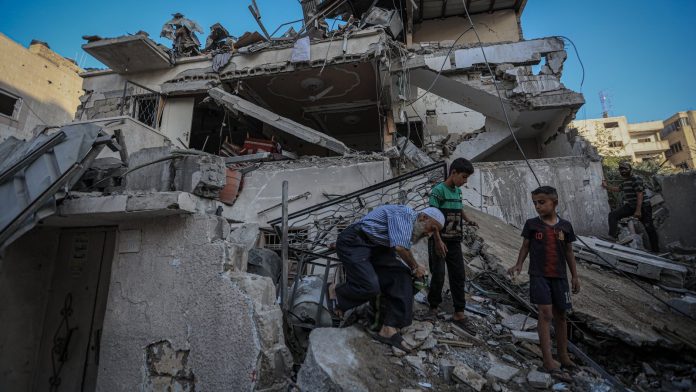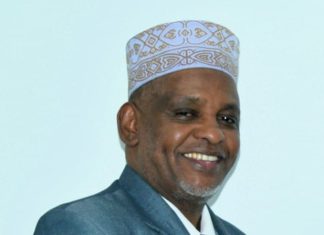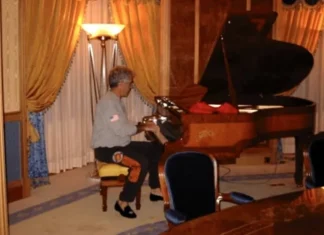The Heart of Gaza: A City Under Siege and the Fragile Dance of War and Peace
The sun casts long shadows over Gaza City, where the streets once alive with children playing and bustling markets now echo with the grim sounds of war. More than eight months into a devastating conflict that has shattered lives and torn communities apart, the uneasy calm belies a storm gathering on the horizon. Israel’s military has announced the initial thrust of an audacious campaign to seize full control of Gaza City, a move fraught with grave consequences for the city’s nearly two million residents and the fragile prospects for peace.
A City on the Edge
“We are on the outskirts, holding firm,” Brigadier General Effie Defrin, Israel’s military spokesman, declared recently, speaking with the steely resolve of a man who knows the stakes are immense. Israeli forces have edged into Gaza City’s fringes, setting the stage for fierce urban combat that could reshape the war’s trajectory — and the lives of countless civilians caught in the crossfire.
Just weeks ago, the violence exploded in October 2023 with a shocking Hamas attack that shook Israel’s southern border. Gunmen stormed Israeli communities, killing 1,200 civilians, among them children, and abducted over 250 hostages. The reverberations have since echoed loudly, as Israel’s military embarked on a relentless campaign — a war of air strikes and ground offenses — to dismantle the militia ruling Gaza for nearly two decades. Already, Israeli forces control about three-quarters of Gaza, but the prize and the peril lie in Gaza City’s dense urban labyrinth.
Mohammed Khalil, a Gaza City resident, reflects the sorrow and uncertainty etched on so many faces here: “We hear the bombs, and we see the soldiers. Our homes are disappearing, and where will we go? The whole city feels like a ghost town soon.” His words carry the heavy grief of displacement — a fate poised to become reality for many.
The Toll of a City Under Fire
Since the conflict began, more than 62,000 Palestinians have perished, according to Gaza’s health authorities, with women and children disproportionately bearing the brunt. Homes, schools, mosques — landmarks of daily life — lie in smoldering ruins. The scale of devastation is hard to grasp, and yet, the human cost beneath each statistic is even harder to bear.
“It’s not just buildings that are destroyed; it’s hopes, dreams, and futures,” says Dr. Rana Husseini, a Gaza-based humanitarian worker. “Every strike fractures a community’s soul.”
Israel contends that Hamas fighters hide within civilian strongholds — a grim reality that complicates the already delicate calculus of conflict. Still, defenders of human rights and international observers warn of the catastrophic humanitarian fallout of a full-scale assault on Gaza City, warning it could trigger an unprecedented wave of displacement.
The Political Chessboard: Ceasefires, Settlements, and Global Pressures
As Israeli officials prepare for a deeper military plunge into the city, political undercurrents tug with equal force. The Israeli government finds itself balancing fierce internal pressures, with far-right figures urging no quarter, no ceasefire, and outright territorial annexation of Gaza and the West Bank.
Finance Minister Bezalel Smotrich, a vocal hardliner, recently greenlit a controversial settlement plan in the West Bank aimed at permanently erasing any future Palestinian state, a policy that has drawn sharp international condemnation. “We are writing a new chapter,” Smotrich said unapologetically. “One where there is no space for the old claims.”
Internationally, the calls for pauses in the violence grow louder. A proposal brokered by Arab mediators offers a 60-day ceasefire, framed by the release of some hostages and prisoners. Hamas has tentatively accepted the plan, but Israel remains cautious, demanding the immediate release of all hostages — around 50 remain in captivity, with officials believing about 20 are still alive.
“How do you negotiate when lives hang in such a delicate balance?” asks Dr. Leila Mansour, a Middle East professor at SOAS University of London. “The political calculus is maddening, but so is the human cost of delay.”
Voices From the Ground: Fear, Hope, and Resilience
In the narrow alleyways of Gaza, resilience flickers amid rubble. Ahmed, a young father who lost his home last month, shares his fears: “We survived the bombs, but what if the ground troops come? Where will my children be safe? Gaza is shrinking, but our hearts still beat strong.”
Nearby, Sister Mary of the Latin Patriarchate — custodians of the city’s only Catholic church — speaks softly of her parish’s role amid chaos: “We are trying to offer sanctuary and a glimmer of hope. Yet even we have started receiving evacuation warnings. The fabric of this community is unraveling.”
Across the border in Israel, the atmosphere is charged with a mix of apprehension and resolve. Prime Minister Benjamin Netanyahu’s office expedited plans to hasten the military timeline, underlining an urgency felt by many Israelis, amid widespread public support for ending the conflict, especially if it secures the hostages’ freedom.
Yet, public demonstrations also reveal the complexity of sentiment. In Tel Aviv, thousands gathered, not for war, but for peace — urging political leaders to consider ceasefires and diplomacy.
Beyond Borders: What Gaza’s Fate Means for the World
Gaza’s story is no longer just regional; it’s a global reckoning. Polls from across the world, including a recent Reuters/Ipsos survey in the United States, suggest a shift in attitudes: 58% of Americans now support recognizing Palestine as a nation at the United Nations.
From this vantage, the Gaza conflict becomes a mirror, reflecting broader themes of nationalism, human rights, and the fierce struggle for self-determination that many communities grapple with worldwide. Will the world continue to watch passively, or will it demand accountability and compassion from leaders on all sides?
Reflecting on these tensions, one can’t help but ask: In a world saturated by headlines of violence and despair, what responsibility do we bear as global citizens to understand Gaza’s plight as more than a distant conflict? How do we amplify the voices of those who live the war every day?
The Road Ahead: A City and a People in the Balance
Gaza City stands at a crossroads — shadows lengthening at its edges, uncertainty thickening the air. The coming days will test not only military strategy or political will but also the resilience of its people and the conscience of the global community.
As the operation escalates, as the calls for ceasefire echo louder, as older divisions are laid bare and newer hopes flicker, could this beleaguered city become a symbol not just of suffering, but of the painful, complex journey towards peace?
For now, Gaza waits — a city suspended between fear and hope, devastation and survival, war and the dream of peace. And the world watches, too.










